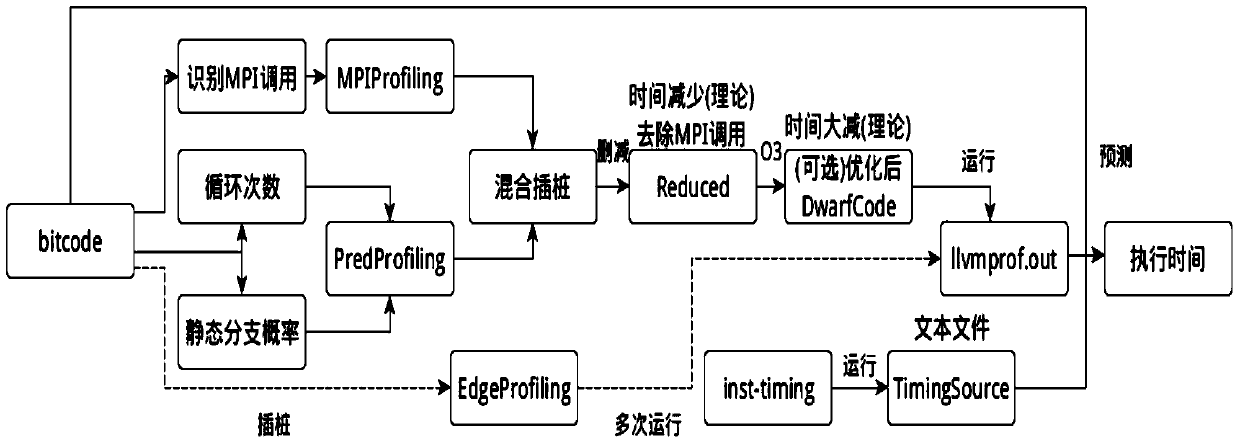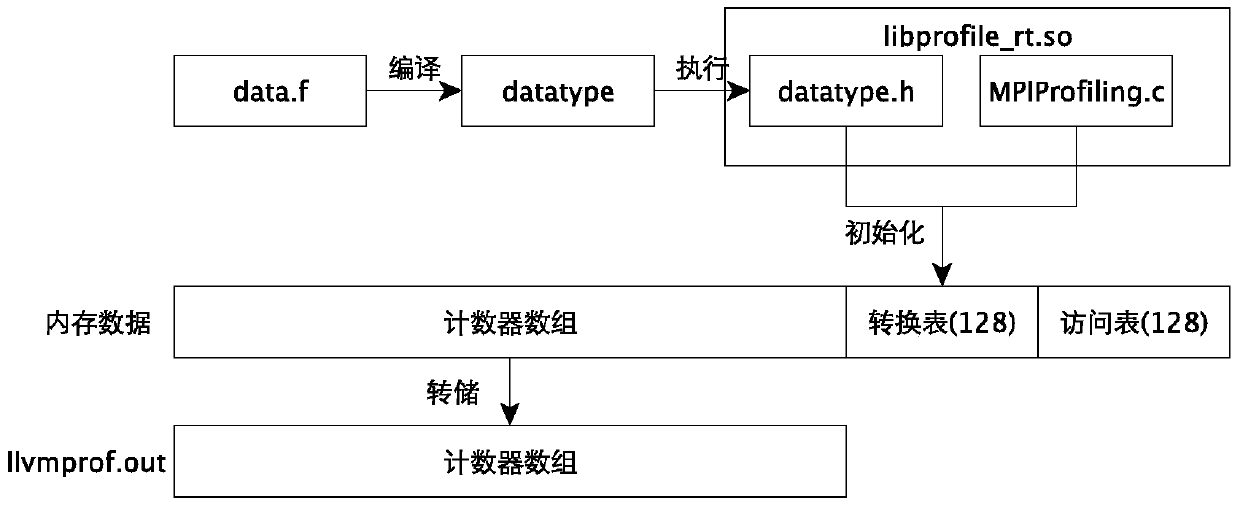Automatic Performance Prediction Method of Scientific Computing Program Based on llvm
An automatic performance and prediction method technology, applied in software testing/debugging, etc., can solve problems that are difficult to be reasonable, cannot be continuously changed, and cannot be satisfied, so as to achieve user-friendly use, improve accuracy, and rely on simple effects
- Summary
- Abstract
- Description
- Claims
- Application Information
AI Technical Summary
Problems solved by technology
Method used
Image
Examples
specific Embodiment approach 1
[0043] Specific implementation mode one: as figure 1 As shown, the present embodiment elaborates on the LLVM-based automatic performance prediction method for scientific computing programs of the present invention:
[0044] 1. Overall structure:
[0045] Realize the overall architecture diagram of the automatic performance prediction method for scientific computing programs based on LLVM, such as figure 1 shown;
[0046] For the performance model, our solution is not to give a formula and submit it to manual calculation like the traditional dynamic analysis method, because if the formula is too complicated, it is necessary to actually write a program to perform the calculation. So we skip the step of the formula, and then directly give a program, which can report the predicted program time when executed, and call this program DwarfCode. When building DwarfCode, I choose to build directly from the source code, retain the calculation code from the input to the number of cycle...
PUM
 Login to View More
Login to View More Abstract
Description
Claims
Application Information
 Login to View More
Login to View More - R&D
- Intellectual Property
- Life Sciences
- Materials
- Tech Scout
- Unparalleled Data Quality
- Higher Quality Content
- 60% Fewer Hallucinations
Browse by: Latest US Patents, China's latest patents, Technical Efficacy Thesaurus, Application Domain, Technology Topic, Popular Technical Reports.
© 2025 PatSnap. All rights reserved.Legal|Privacy policy|Modern Slavery Act Transparency Statement|Sitemap|About US| Contact US: help@patsnap.com



